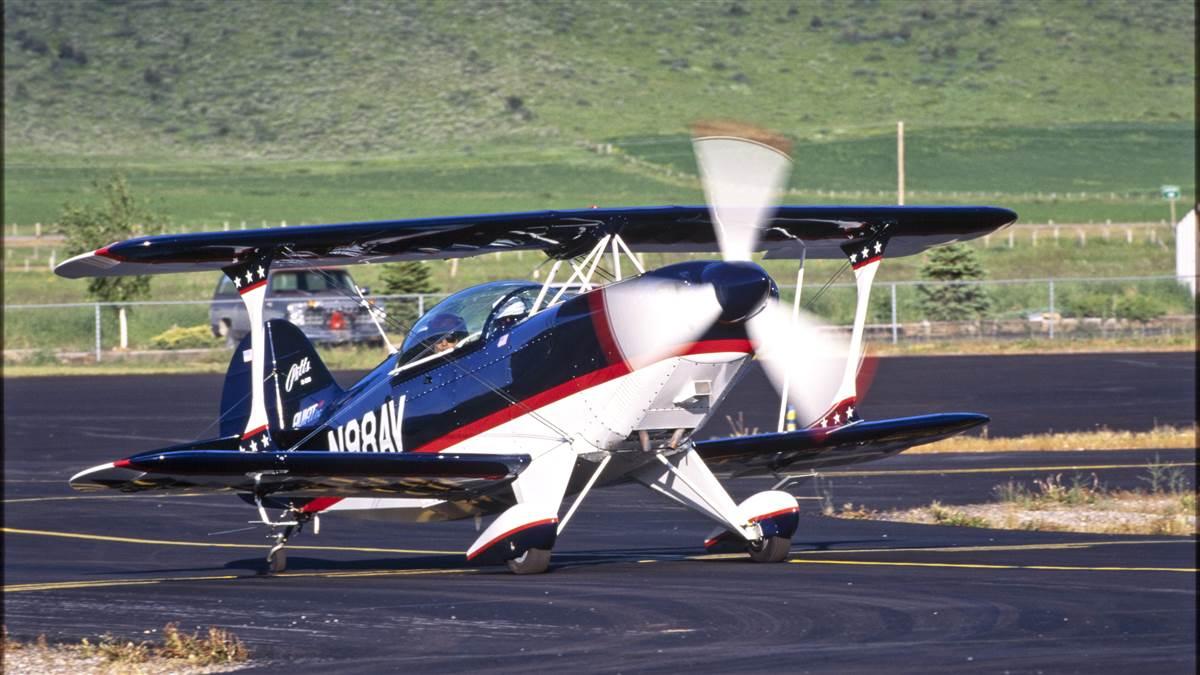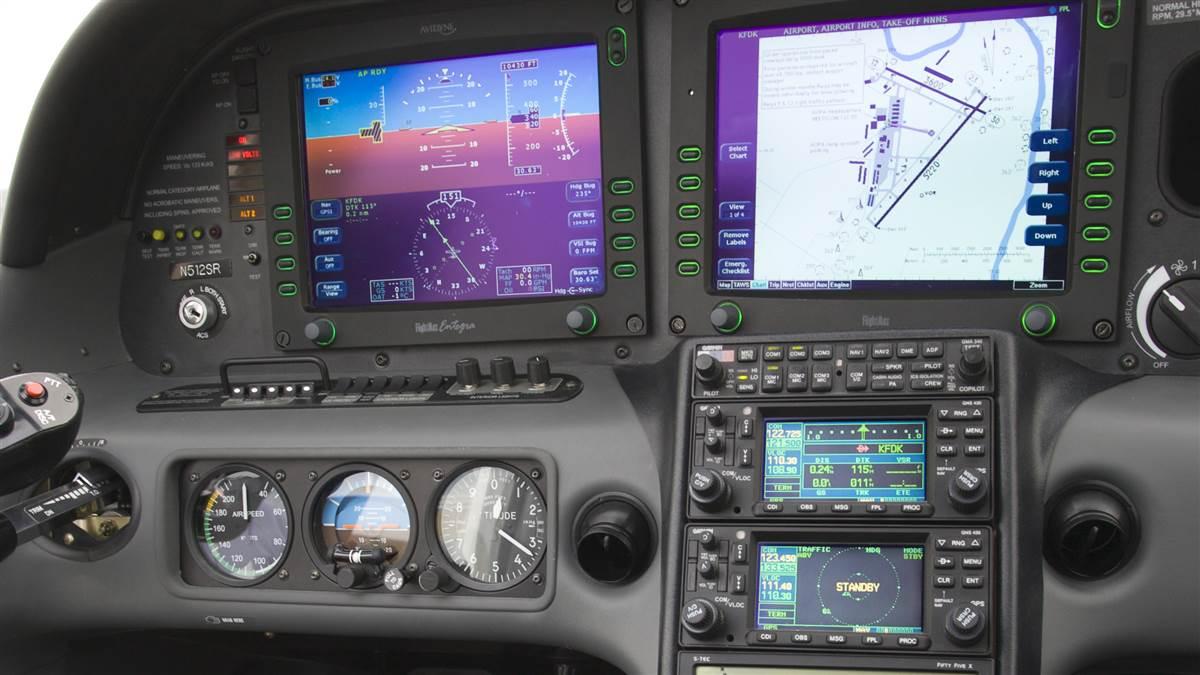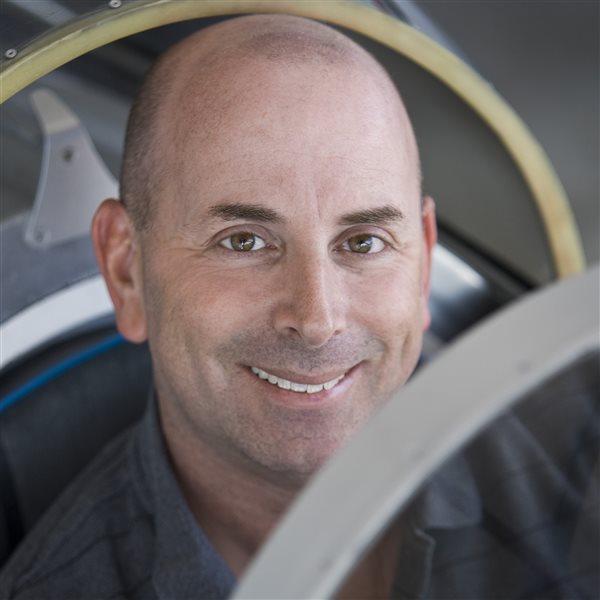Bad reputation
The same simple techniques tame the wildest of airplanes

 As a student pilot, the idea of learning the skills necessary to safely operate more than one or two of these iconic aircraft may seem unrealistic. And when you talk to pilots who fly any particular aircraft model, they like to expound on the uniquely demanding and idiosyncratic nature of their airplanes—and the exceptional pilot acumen required to counteract them.
As a student pilot, the idea of learning the skills necessary to safely operate more than one or two of these iconic aircraft may seem unrealistic. And when you talk to pilots who fly any particular aircraft model, they like to expound on the uniquely demanding and idiosyncratic nature of their airplanes—and the exceptional pilot acumen required to counteract them.
Mooney pilots emphasize precise airspeed and attitude control; Cirrus pilots endlessly discuss their techniques for employing advanced avionics; Pitts pilots speak of the Riverdance-style footwork required to take off and land their diminutive biplanes, and so on.
But the truth is that these airplanes (or any other FAA-certified models, for that matter) have much more in common than their appearances would suggest. And the fundamental skills a student pilot learns while mastering relatively simple trainers will transfer readily to every other airplane they’re fortunate enough to fly.
Aviation’s “greatest generation” learned to fly in low-tech Piper Cubs and Stearman biplanes, yet they later pioneered supersonic jets and sweptwing airliners—some of the most complex and demanding airplanes ever to leave the ground.
To me, the first step in not being intimidated by a new aircraft comes from a strange and unlikely source: the FAA’s Part 23 certification standards. Every general aviation aircraft ever certified by that agency shares certain characteristics that go far beyond “pull and the houses get smaller, push and the houses get bigger.”
Let’s start with the FAA’s requirements for controllability.
Pitts pilots speak of the Riverdance-style footwork required to take off and land their diminutive biplanes.“The airplane must be controllable and maneuverable, without requiring exceptional piloting skill, alertness, or strength,” the FAA says. It further requires that the airplane’s benign nature cover “all loading conditions…and during all phases of flight.”
So, you don’t have to have R.A. “Bob” Hoover’s legendary stick-and-rudder skills, or Paul Bunyan’s strength, to fly high-performance airplanes. Heck, by these standards, you may not even have to pay that much attention.
Does that mean all of these airplanes can fly themselves? The FAA’s Part 23 “stability” section spells that out and, yeah, these airplanes will fly pretty darn well without pilot intervention. And on top of that, they all (kind of) fly the same.
“Airplanes must have static longitudinal, lateral, and directional stability in normal operations; dynamic short-period and Dutch roll stability; and provide stable control force feedback throughout the operating envelope,” according to FAA certification standards. “No airplane may exhibit any divergent longitudinal stability characteristic so unstable as to increase the pilot’s workload or otherwise endanger the airplane and its occupants.”
Simply put, this means that the airplane’s nose must stay where the pilot points it.

Sweet spot
It doesn’t take a super-pilot to fly these airplanes, but what about landing them?
Any pilot hangar-talk session is sure to contain all sorts of folklore and tall tales about this essential phase of flight. Pilots are judged on their landing finesse, and we all want to do it just right.
Perhaps for this reason, pilots tend to exaggerate the landing difficulty of the airplanes they fly, and invent special techniques for reconnecting them with the Earth.
I recently flew with a new Mooney pilot who was having difficulty making consistently good landings. He flew beautiful patterns, but on touchdown the airplane would lurch and hop and rock fore and aft to the point that he was sure he was going to damage it.
We attached a point-of-view video camera to the aircraft belly so that he could see what the wheels were doing when they came in contact with the pavement. It turned out that he was touching down in a flat attitude with all three wheels contacting the pavement at once, then becoming slightly airborne again in a series of ugly bunny hops that sometimes touched down on the nosewheel first. He was in grave danger of a propeller strike.
The reason for this poor result? The pilot had read so much misinformation on Mooney pilot forums about the danger of tail strikes in long-body Mooneys like his that he wasn’t pulling back on the yoke enough during the landing flare. The result was flat touchdowns with excessive speed that risked a prop strike.
Once the pilot saw the interaction that was taking place between his airplane’s wheels and the ground, he started landing normally (with ever-increasing back-pressure on the yoke in ground effect as the aircraft decelerates) and the problem vanished.
A long time ago I was preparing to fly a single-seat Pitts Special for the first time. It had a much higher approach speed than the clipped-wing Piper Cub I’d been flying, so it seemed sensible to use the Cub as a sort of Pitts simulator. I climbed in the Cub and made a series of circuits at my sleepy home airport intentionally flying at absurdly high speeds and steep angles and nearly perpendicular slips on final.
Later, one of the veteran pilots who had seen my bizarre Cub antics asked me what I had been trying to accomplish, so I explained that I’d been using the Cub in much the same way that NASA astronauts practiced Space Shuttle landings in a highly modified Gulfstream business jet.
He was slightly amused, but mostly pained, and he provided a timeless piece of advice.
“Fly the airplane you’re actually flying,” he said. “Every airplane has a sweet spot in which it’s properly set up and configured for landing. Find that groove and you can land just about anything.”
Superhuman skills
 So, where’s that elusive sweet spot? It all starts with the airplane’s power-off stall speed in the landing configuration, or VS0. Simply multiply the VS0 times 1.3 and you have your target airspeed for final approach. In an airplane such as a Cirrus SR22 with a flaps-down stall speed of 59 knots, aim for 77 knots on final.
So, where’s that elusive sweet spot? It all starts with the airplane’s power-off stall speed in the landing configuration, or VS0. Simply multiply the VS0 times 1.3 and you have your target airspeed for final approach. In an airplane such as a Cirrus SR22 with a flaps-down stall speed of 59 knots, aim for 77 knots on final.
Modulate the power for a descent rate of about 500 feet per minute on short final, hold a consistent pitch attitude, wait to flare until you just can’t stand it, and you’ll make consistently good landings.
Also, resist the temptation to fudge target approach speeds on the high side. Here’s how that happens. Going back to the Cirrus example, the airplane stalls at 59 knots indicated airspeed at its full gross weight. If you’re flying by yourself, or with a light passenger and less than full fuel and baggage, your airplane likely weighs significantly less than that. Cirrus instructors typically recommend reducing approach speeds by about one knot for every 200 pounds the airplane is under its gross weight.
Also, if there’s a gusty wind, pilots are taught to add half the gust factor to their final approach speeds—and if there’s any doubt, we tend to err on the high side. On a day in which the winds are 10 knots gusting to 15, we should only add 2.5 knots to the final approach speed, but sometimes it’s comforting to round up.
Pretty soon, we’ve bypassed the sweet spot in favor of the fast lane. Extra speed changes the feel of an airplane in the landing flare, and our muscle memory from all that time spent grinding around the traffic pattern practicing landings suddenly works against us.
The elevator feels lighter and it’s more effective, so there’s a tendency to balloon in the flare, then run out of energy and stall above the runway. Worse yet, pilots sometimes react to balloons by pushing forward on the stick. That can result in the airplane hitting the ground nosewheel first—an invitation to a prop strike or a bent firewall that no pilot or owner wants.
Cirrus pilots endlessly discuss their techniques for employing advanced avionics.Develop a consistent strategy for landings and you’ll find that it works across a broad array of aircraft models. It’s true that some airplanes have idiosyncrasies, or distinctive features or characteristics that give them “personality.” A Waco UPF–7 feels like a more substantial airplane than a Stearman PT–17, even though they’re close to the same size and weight; an Aviat Husky’s elevator trim system is much heavier than that of a Piper PA–18 Super Cub’s, so a Husky pilot who flies too fast on final is likely to end up being out of trim in the flare. Long-body Mooneys often require full nose-up elevator trim at touchdown, especially when the airplane’s center of gravity is close to the forward limit. But these differences are relatively minor and require only slight adjustments in pilot technique—not fundamentally different strategies.
Pilots should strive for precision, but the airplanes we fly can be surprisingly tolerant of some of our mistakes.
I once watched the pilot of a North American T–6 Texan, a warbird with a fearsome reputation for difficult ground handling, flare too high and stall. The airplane shuddered about six feet off the ground, then dropped a wing and hit the runway on one main wheel and the tailwheel.
I thought the landing gear would fold under the cruel side load, or that the tire would separate from its rim. But the airplane shook off the bad landing and taxied to the hangar, undamaged.
On a similar note, I’ll always be grateful to one anonymous Pitts S–2B pilot who flew an absolutely atrocious, wildly fast approach with a plunging, slipping descent to landing. He ballooned and then stalled above the runway, and the bright red airplane hit the runway hard on all three wheels. The bungees inside the main landing gear stretched wide as the gear splayed out, then snapped back as the tires barked and squealed. Yet each bounce got smaller, and soon the airplane slowed to taxi speed and exited the runway. There was no prop strike, and the wheel fairings remained attached and undamaged. The pilot stopped at the fuel pump and, miraculously, the airplane was ready to fly again.
It seemed astonishing that the Pitts, which has a reputation for being supremely difficult to land, could tolerate such abuse. As an aspiring aerobatic pilot, seeing this gave me confidence that I, too, could someday fly a Pitts without wrecking it.
I’m not trying to promote pilot sloppiness. My point is simply to reject the notion that pilots must possess superhuman ability to fly a broad range of GA airplanes. The same laws of physics apply—and so do the same fundamental pilot skills. <
Dave Hirschman is an editor at large for AOPA.



